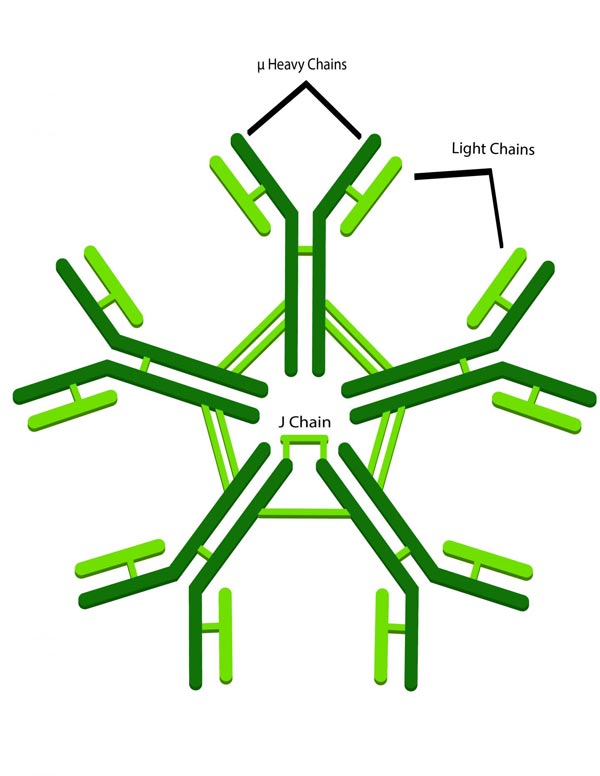Research shows a promising new class of antibodies protects against HIV-1 infection

The IgM antibody has multiple arms to catch the virus, making it more efficient in clumping up the virus and keeping it from passing through the mucosal barrier and entering the rest of the body. Credit: graphic artwork Chris Wager
“IgM is sort of the forgotten antibody,” Dr. Ruprecht, Scientist and Director of Texas Biomed's AIDS Research Program, said. “Most scientists believed its protective effect was too short-lived to be leveraged as any kind of protective shield against an invading pathogen like HIV-1.”
The study is published in the July 17, 2018 edition of the journal AIDS. The article is listed as “Fast Track,” indicating these new and exciting data should get special attention.
Rhesus monkeys at the Southwest National Primate Research Center on the Texas Biomed campus served as models for the in vivo study. Scientists first treated the animals with a man-made version of IgM, which is naturally produced by plasma cells located under the epithelium (the surface lining of body cavities).
Half an hour later, the same animals were exposed to SHIV (simian-human immunodeficiency virus). Four out of the six animals treated this way were fully protected against the virus. The animals were monitored for 82 days.
Dr. Ruprecht's team found that applying the IgM antibodies resulted in what is called immune exclusion. IgM clumped up the virus, preventing it from crossing the mucosal barrier and spreading to the rest of the body. The technique of introducing pre-formed antibodies into the body to create immunity is known as passive immunization.
IgM has a high affinity for its antigens and “grabs them very quickly and does not let go,” Dr. Ruprecht explained. “Our study reveals for the first time the protective potential of mucosal anti-HIV-1 IgM. IgM has a five-times higher ability to bind to virus particles compared to the standard antibody form called IgG. It basically opens up a new area of research. IgM can do more than it has been given credit.”
An accompanying editorial says Dr. Ruprecht has “set off a new wave in evaluating the activity of IgM antibodies in neutralizing HIV-1…[and she and her group] have largely broadened the horizon of neutralizing HIV-1 antibodies, which, as single or combined agents, may be used for HIV-1 prevention and treatment.”
This investigation used resources that were supported by the Southwest National Primate Research Center grant P51 OD011133 from the Office of Research Infrastructure Programs, National Institutes of Health.
Media Contact
All latest news from the category: Life Sciences and Chemistry
Articles and reports from the Life Sciences and chemistry area deal with applied and basic research into modern biology, chemistry and human medicine.
Valuable information can be found on a range of life sciences fields including bacteriology, biochemistry, bionics, bioinformatics, biophysics, biotechnology, genetics, geobotany, human biology, marine biology, microbiology, molecular biology, cellular biology, zoology, bioinorganic chemistry, microchemistry and environmental chemistry.
Newest articles

NASA: Mystery of life’s handedness deepens
The mystery of why life uses molecules with specific orientations has deepened with a NASA-funded discovery that RNA — a key molecule thought to have potentially held the instructions for…

What are the effects of historic lithium mining on water quality?
Study reveals low levels of common contaminants but high levels of other elements in waters associated with an abandoned lithium mine. Lithium ore and mining waste from a historic lithium…

Quantum-inspired design boosts efficiency of heat-to-electricity conversion
Rice engineers take unconventional route to improving thermophotovoltaic systems. Researchers at Rice University have found a new way to improve a key element of thermophotovoltaic (TPV) systems, which convert heat…



